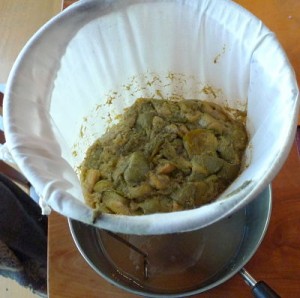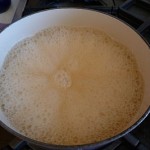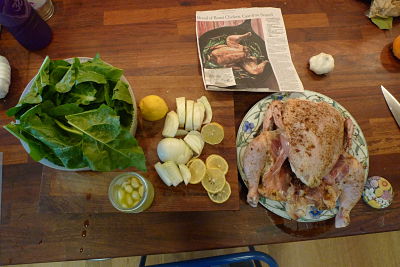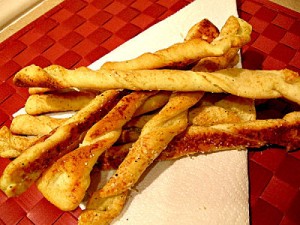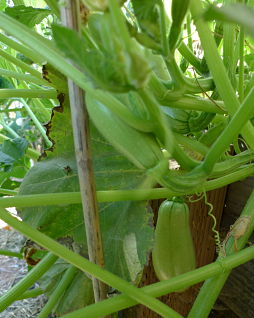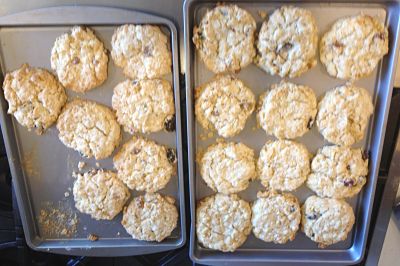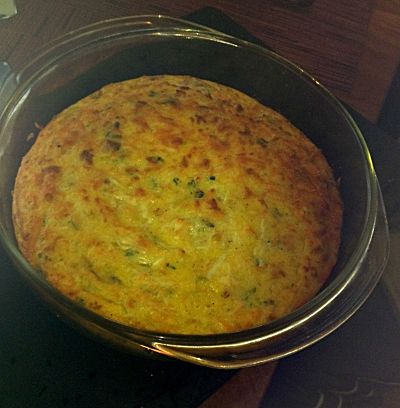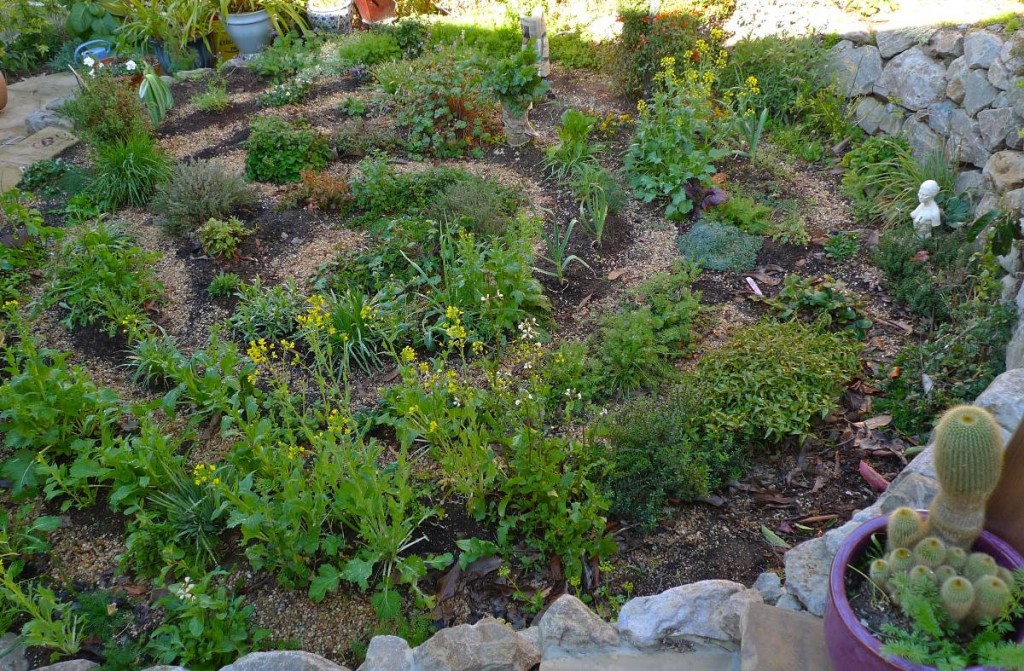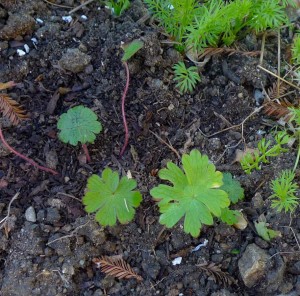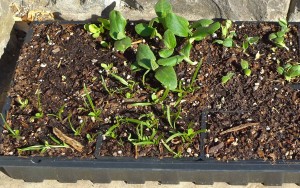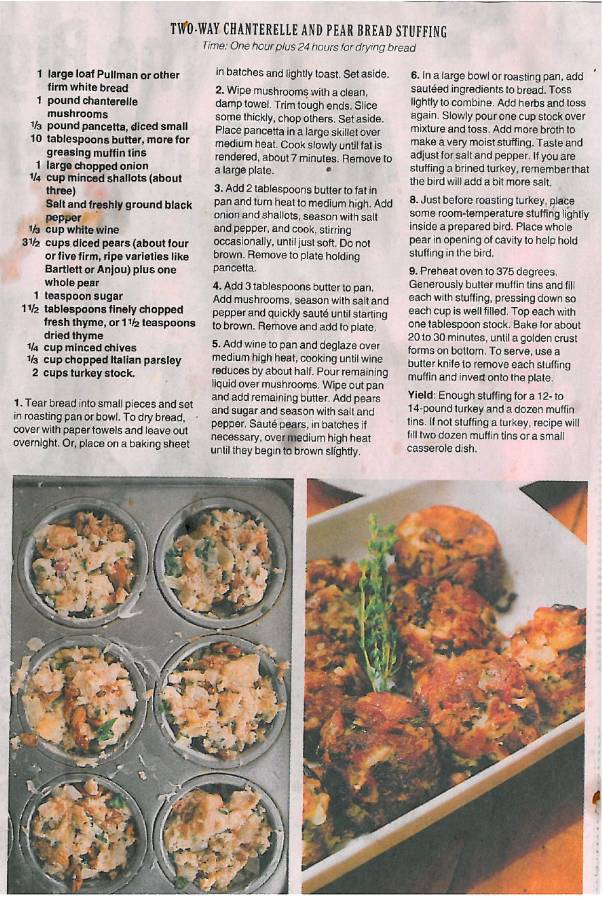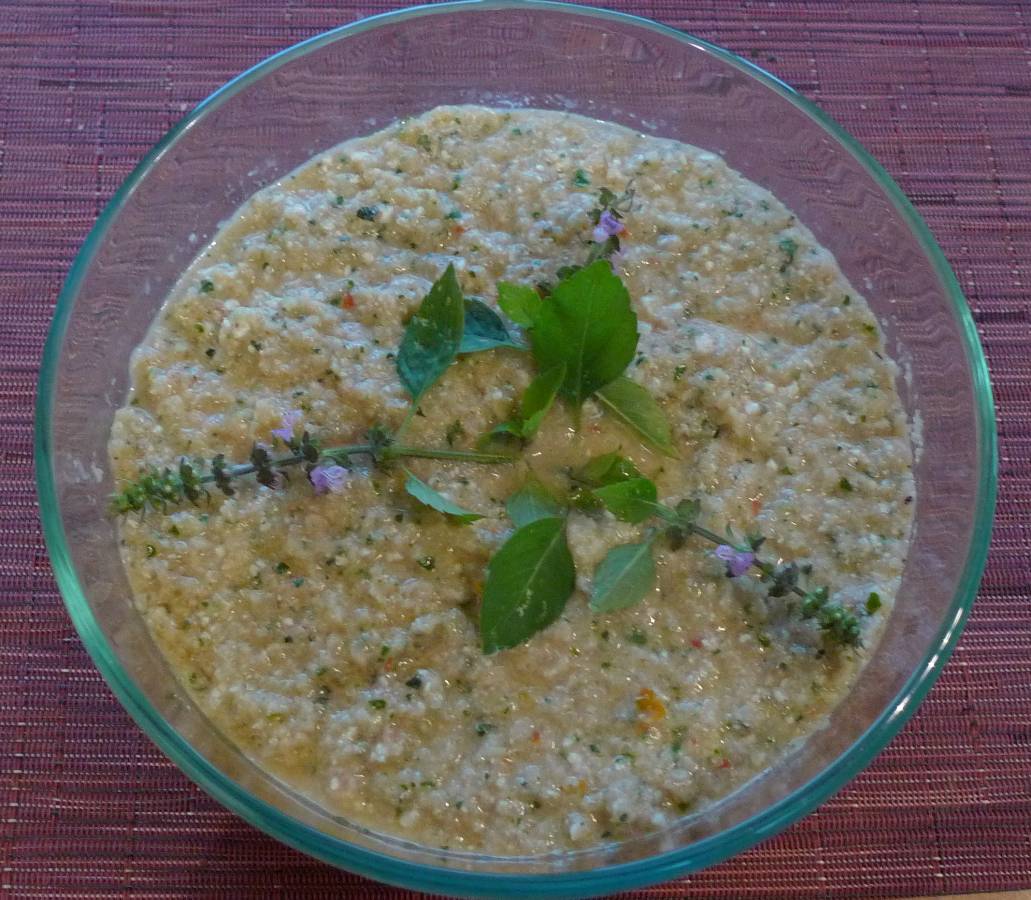It’s easy to make jam–just fruit, sugar and cook until thick. You don’t have to worry much about it–it can be a little dense or a little runny, but it still spreads. Jelly is a different thing entirely; you have to get the timing just right or you have syrup or cement. With jelly, an alchemical change takes place, which is nowhere more dramatic than with pineapple guavas.
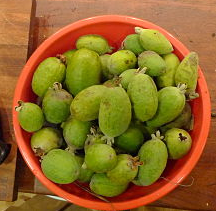 These little green ovals aren’t wonderful raw, and as you cook them up, they look like the most unappetizing murky greenish-brown glop. The strained liquid doesn’t look much better.
These little green ovals aren’t wonderful raw, and as you cook them up, they look like the most unappetizing murky greenish-brown glop. The strained liquid doesn’t look much better.
But after it boils up over 200 degrees, it transforms. In the bubble and seethe, it changes to a clear pinkish gold liquid.
